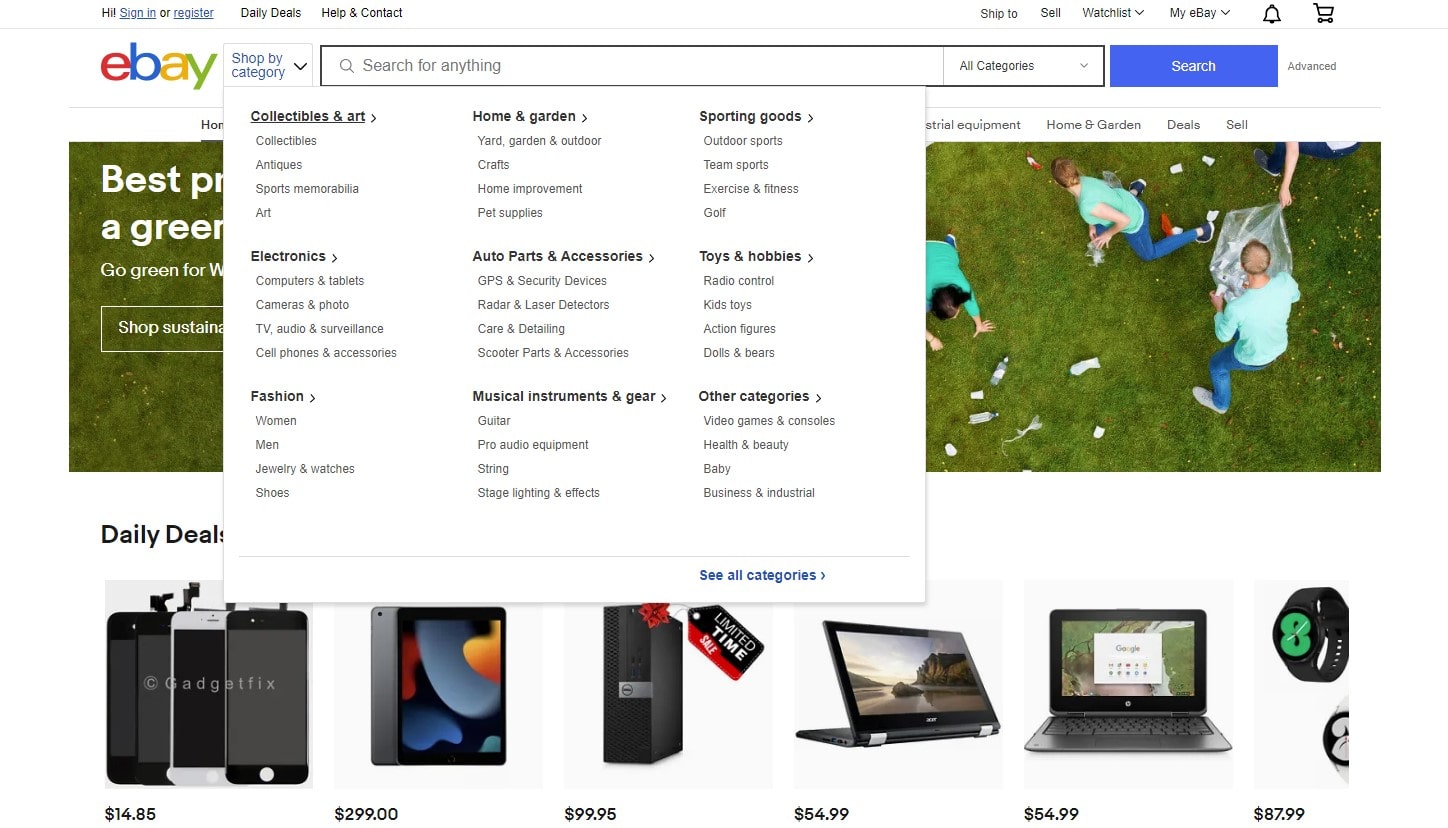In the kaleidoscope of digital commerce, numbers dance and pivot with more grace than ever. Gone are the days when ecommerce was just a buzzword – it’s now the heartbeat of retail. As we delve into the 40 pivotal ecommerce statistics of 2023, we uncover a treasure trove of insights that are reshaping the way we buy and sell. Each statistic is a vibrant thread in the intricate tapestry of online trade, weaving a story of growth, innovation, and consumer behavior.
- Rapid Growth: Ecommerce sales have rocketed, accounting for a staggering 60% of total retail growth.
- Consumer Preferences: Over 70% of shoppers now prefer online over in-store experiences for convenience and variety.
These statistics are more than numbers; they’re powerful signals guiding us through the bustling digital marketplace. Ecommerce has not just grown; it’s evolved, becoming an integral part of our daily lives. Understanding these statistics is crucial for any business aiming to thrive in this digital era.

So, how can you leverage these insights to boost your ecommerce strategy? Plerdy’s tool offers a solution – an innovative approach to analyzing user behavior for enhanced conversion rates and usability. Whether it’s A/B testing or SEO data analysis, Plerdy provides the data-driven insights you need to stay ahead in the ecommerce game.
Remember, each ecommerce statistic is a stepping stone to understanding the ever-changing consumer landscape. Embrace them, and you unlock the potential to revolutionize your online presence.
What is Global Ecommerce?
Global e-commerce, a sprawling digital marketplace, is revolutionizing how we buy and sell. It’s not just a trend; it’s an evolving ecosystem that’s redefining retail on a global scale. But what really propels this juggernaut? It’s the statistics – those insightful, data-driven nuggets that map out the landscape of online trade. Let’s break it down with some eye-opening statistics:
- Cross-border Shopping: Did you know that nearly 57% of online shoppers have bought from an overseas retailer? This statistic underscores the borderless nature of e-commerce, highlighting opportunities for businesses to reach international markets.
- Mobile Commerce: Here’s a game-changer – over 70% of online transactions are expected to be made on mobile devices by the end of 2023. This statistic is a clarion call for e-commerce platforms to optimize for mobile users.
- Customer Behavior: A staggering 81% of shoppers conduct online research before making a purchase. This statistic points e-commerce businesses toward the importance of SEO and comprehensive product information.
In this realm, each statistic is a thread in the fabric of the global e-commerce narrative:
- Rising online sales figures in Asia indicate a shifting focus towards the East.
- The spike in social media purchases shows how e-commerce is blurring lines with social networking.
- The growing preference for eco-friendly products reflects a shift in consumer consciousness.
Every statistic tells a story, shaping strategies and pushing the boundaries of what’s possible in e-commerce. From small startups to global giants, businesses are turning to these stats to chart their course in the vast ocean of online retail. They’re not just numbers – they’re the compass that navigates the future of global e-commerce. In this dynamic landscape, staying ahead means staying informed, and that’s where statistics shine – as the guiding stars of the e-commerce universe.
What is E-commerce Statistics?

E-commerce statistics are the lifeblood of the digital retail space. They’re not just numbers on a screen – they’re the guiding lights for online business success. Here’s how they play out in various e-commerce arenas:
- Fashion Retail: Imagine knowing that 60% of online shoppers dive into reviews before clicking ‘buy.’ This statistic is pivotal for fashion e-tailers, driving them to showcase customer feedback prominently.
- Tech Gadgets: With statistics showing a 70% surge in online tech purchases, e-commerce sites are zooming in on user-friendly tech specs and comparison tools.
- Home Goods: A whopping 80% of buyers prefer visual over text descriptions. This statistic steers home goods sites to focus on high-quality images and interactive viewing options.
These e-commerce statistics do more than count clicks; they shape the online shopping journey, from the first glance at a product to the final click on the checkout button. They help businesses understand what makes their customers tick, guiding them to tailor their websites for maximum engagement and conversion.
In the world of e-commerce, statistics are the unsung heroes. They’re behind every tweak in website design, every adjustment in marketing strategy, and every innovation in customer experience. These statistics are crucial for any e-commerce player who wants to win. They’re not just tracking progress; they’re making it happen.
How Big is the Ecommerce Market?

The ecommerce market is an ever-expanding universe, bustling with activity and brimming with opportunity. To grasp its enormity, let’s dive into the statistics that paint a vivid picture of its size and scope. Ecommerce isn’t just growing; it’s skyrocketing, reshaping the way we think about buying and selling.
Here’s a snapshot of the ecommerce landscape:
- Global Reach: Ecommerce sales are projected to hit a jaw-dropping $6.5 trillion by 2023. This figure represents a significant chunk of the global retail market, showcasing ecommerce’s expansive reach.
- Sector-Specific Growth: In sectors like fashion, electronics, and home goods, ecommerce has become the go-to shopping method. For instance, in the fashion industry, online sales account for over 35% of total revenue.
- Consumer Behavior Shifts: The average consumer now spends more online than ever before, with ecommerce transactions making up a substantial portion of their shopping.
These statistics underscore the sheer magnitude of the ecommerce market. It’s not just a segment; it’s a colossal player in the global economy. Ecommerce has woven itself into the fabric of everyday life, becoming synonymous with convenience, variety, and personalization.
What’s driving this growth? A combination of factors – technological advancements, changing consumer preferences, and the increased accessibility of online platforms. Ecommerce has broken down geographical barriers, bringing products from around the world to our doorsteps with just a few clicks.
In essence, ecommerce isn’t just big; it’s a behemoth, continuously evolving and expanding. For businesses, understanding these ecommerce statistics isn’t just helpful; it’s essential to stay competitive and relevant in this digital age. Ecommerce is the future of retail, not a trend.
List of Top 40 E-commerce Statistics
- Online Retail Growth: By 2023, 20.8% of all retail purchases are projected to be online transactions – a significant shift from traditional shopping habits.
- E-commerce Evolution: In 2026, online retail is set to rise to 24%, underscoring the growing preference for digital shopping experiences.
- Sales Surge: E-commerce sales are anticipated to grow by 10.4% in 2023, reflecting the sector’s robust expansion.
- Global Market: The worldwide e-commerce market is expected to reach a staggering $6.3 trillion in 2023.
- 2026 Projections: The e-commerce market is forecasted to surpass $8.1 trillion by 2026, indicating its long-term viability and growth potential.
- U.S. Market Trends: The U.S. e-commerce sector will see sales exceeding $1.1 trillion in 2023.
- Digital Purchases in the U.S.: In the United States, 16.4% of all retail purchases are predicted to be online in 2023.
- Amazon’s Dominance: Amazon holds the largest e-commerce market share, with 37.8% of sales.
- Top E-commerce Sites: Walmart, eBay, and AliExpress lead in website visits, with Walmart.com garnering around 854.9 million monthly visits as of December 2022.
- International Online Shopping: 57% of online shoppers engage in international purchases, highlighting e-commerce’s global reach.
- Cart Abandonment: High additional costs like shipping and taxes lead to 48% of online shoppers abandoning their carts.
- Account Creation Hurdle: 24% of online shoppers leave their cart if forced to create a store account.
- Shipping Speed Impact: 22% of online shoppers abandon their purchase due to slow shipping.
- Monthly Online Shoppers: 79% of consumers shop online at least once a month, showcasing the habitual nature of digital shopping.
- Mobile Cart Abandonment: On mobile devices, the online shopping cart abandonment rate stands at 84%.
- Desktop Cart Abandonment: For desktop shoppers, the cart abandonment rate is 72%.
- Social Media Commerce Boom: In 2020, social media commerce reached $992 billion, with expectations of $2.9 trillion by 2026.
- Social Shopping in the U.S.: 96.9 million Americans use social media platforms for shopping.
- Millennials and Social Commerce: 55% of 18-to-24-year-old U.S. social media users have bought something.
- Social Commerce in China: Nearly half of China’s online shoppers have bought items through social networks.
- Social Media Influence: 40% of purchases are influenced by social media platforms.
- Influencers and Purchasing Decisions: 49% of social commerce shoppers are swayed by influencer recommendations.
- Smartphone Shopping: A whopping 91% of consumers make online purchases using their smartphones.
- Mobile Commerce Growth: Mobile commerce is set to represent 6% of all retail sales in 2023.
- Tablet Commerce Decline: Tablet e-commerce sales are projected to decrease to $54.01 billion by 2026.
- E-commerce Fraud: $41 billion was lost to e-commerce fraud in 2022.
- Fraud Prevention Market: The 2020 e-commerce fraud detection market was above $28 billion.
- Black Friday Online Spending: Online shoppers spent $9.12 billion on Black Friday in 2022.
- Cyber Monday Sales: $11.3 billion was spent on Cyber Monday in 2022.
- Global E-commerce Sales: Worldwide e-commerce sales hit $5.2 trillion in 2021.
- E-commerce Penetration: Global e-commerce penetration is expected to reach 25% by 2027.
- Cross-Border Sales Growth: Cross-border e-commerce sales could grow to $6.585 trillion by 2032.
- Mobile E-commerce Sales: Mobile e-commerce sales in the U.S. might top $510 billion in 2023.
- Smartphone User Behavior: 79% of smartphone users bought anything online in the past six months.
- Price Comparison on Mobile: 33.6% of shoppers use mobile devices for price comparisons while in physical stores.
- Negative Mobile Experience Impact: A negative mobile website experience reduces the likelihood of a future purchase by 62%.
- Abandoned Carts and Fees: Expensive additional fees are the top reason for abandoned shopping carts.
- Chatbots and Conversions: Chatbots and AI can effectively enhance the e-commerce experience by providing instant, personalized customer service. In 2023, it’s estimated that businesses using chatbots will see a 30% increase in conversions, as these tools help reduce bounce rates and guide customers through the sales funnel more efficiently.
- Sustainability and Consumer Choices: Consumers increasingly demand sustainable and ethical options, influencing e-commerce trends. This shift might lead to a rise in eco-friendly products and carbon-neutral shipping options.
- Buy Now, Pay Later Trend: The “buy now, pay later” options accounted for 7% of online orders in the 2022 holiday season, with an expected increase in popularity in 2023. Increasingly, e-commerce shoppers desire flexible payment options.
Conclusion
As we wrap up our exploration of the 40 essential ecommerce statistics of 2023, it’s clear that ecommerce is not just a market segment – it’s a colossal force reshaping retail. 🚀 These statistics are a goldmine for anyone navigating the digital marketplace, offering a detailed glimpse into the trends and behaviors defining ecommerce today.
From soaring global sales to niche-specific triumphs, each statistic underscores the immense scope of ecommerce. Here’s a quick recap of the highlights:
- Worldwide ecommerce sales are expected to hit $6.5 trillion, highlighting its scale.
- Fashion, electronics, and home goods are leading the charge, with ecommerce carving out significant portions of sales in these categories.
- Consumer shift towards online shopping is undeniable, with a notable increase in ecommerce transactions.
This data isn’t just informative – it’s transformative, offering vital insights to businesses and marketers alike. In this ever-evolving landscape, staying ahead means leveraging these statistics to refine strategies and meet consumer needs.
Ready to turn these insights into action? Plerdy’s tool is your gateway to mastering SEO and UX analysis, crucial for enhancing your ecommerce strategy. Dive into detailed data on user behavior, conversion rates, and more to fine-tune your online presence.
Remember, in the dynamic world of ecommerce, knowledge is power. Harness these statistics, and you’re well-equipped to navigate – and lead – in this digital era. Stay informed, stay agile, and watch your ecommerce efforts soar!
